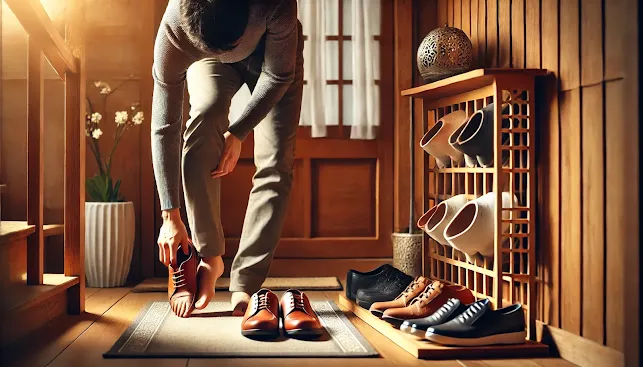If you’re invited to a Korean friend’s house, the first thing you should do is take off your shoes before stepping inside. This isn’t just a custom—it’s an essential part of Korean etiquette and hygiene. But why is this so important in Korea, while in many Western countries, people often wear shoes indoors? And interestingly, why are more Western households now adopting this tradition?
Why Do Koreans Remove Their Shoes Indoors?
In Korea, removing shoes indoors is a deeply rooted tradition. It’s not just about manners—it’s about maintaining a clean and comfortable home environment.
- Hygiene & Clean Floors: Koreans often sit, eat, and even sleep on the floor. Walking around with dirty shoes would introduce bacteria, dust, and outdoor pollutants.
- Ondol Floor Heating: Traditional Korean homes use ondol, a heated floor system. Keeping floors clean is essential since people spend a lot of time sitting or lying on them.
- Comfort & Relaxation: Walking barefoot or in indoor slippers provides a sense of comfort and warmth, making the home feel more inviting.
Why Do Americans Wear Shoes Indoors?
In contrast, many Americans and Europeans traditionally wear shoes inside the home. This is mainly due to differences in lifestyle and home design.
- Carpeted Floors: Many Western homes have carpeted floors, which were originally designed for warmth and comfort, making it less necessary to remove shoes.
- Furniture-based Living: Unlike Korea, where people sit on the floor, Western homes emphasize chairs, sofas, and beds, reducing direct contact with the floor.
- Cultural Habit: In Western etiquette, keeping shoes on is often seen as a sign of readiness and formality, whereas removing shoes may feel too casual.
Countries That Remove Shoes Indoors
Many cultures around the world also follow the practice of removing shoes before entering a home:
- Japan: Just like in Korea, Japanese homes follow the genkan tradition, where shoes are removed at the entrance.
- China: Many households require shoes to be removed to maintain cleanliness, especially in traditional settings.
- Thailand & Vietnam: Influenced by Buddhist practices, it is customary to remove shoes before entering temples and homes.
- Scandinavian Countries (Sweden, Norway, Finland): Due to snowy and muddy conditions, many Nordic homes require shoes to be left at the door.
- Canada: Many Canadian homes encourage removing shoes, especially during winter when snow and dirt are tracked inside.
Western Countries Are Now Adopting This Practice!
Interestingly, more households in the U.S. and Europe are now choosing to remove shoes indoors. What’s driving this shift?
- Hygiene Awareness: Studies have shown that shoe soles carry bacteria, dirt, and even toxic chemicals. This has made people more conscious about indoor cleanliness.
- COVID-19 Impact: The pandemic heightened concerns about bringing outside germs into the home, leading to an increase in shoe-free households.
- Comfort & Wellness Trend: More people are embracing minimalist, wellness-focused lifestyles, which include cleaner and cozier living spaces.
A recent survey found that about two-thirds of Americans now prefer to remove their shoes at home, reflecting a growing shift in cultural norms.
Final Thoughts
While cultures differ in their approach to wearing shoes indoors, the growing awareness of hygiene and comfort is bridging the gap. Whether you’re visiting a friend’s home in Korea or an increasing number of households in the U.S., it’s always a good idea to ask: “Should I take off my shoes?”
So next time you step into a home—whether in Asia, Europe, or North America—be mindful of the local etiquette. And if in doubt, just follow the host’s lead!

